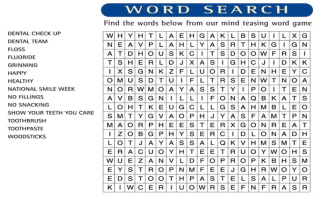|
Experimental Design TutorialAnyone considering, or already studying psychology, forensic psychology, criminal justice etc, will have to learn about and understand research methods and statistics. The fact that research methods and statistics is nearly always compulsory should immediately alert you to its importance. In order to critically evaluate the findings of key studies you need to be aware of how the data supporting those findings came about; and you can't seriously hope to conduct your own research with confidence unless you have a clear idea how to design, execute and analyze your investigation. When I first started supervising research dissertations and projects I came across a large number of students who refused to consider doing anything other than in depth interviews, whether such an approach was appropriate for their particular investigation or not. The most common reason for this was the incorrect assumption that qualitative research methods (text based) are easier to understand and carry out than quantitative (number based) research methods.
Why Do Students Think This?To be fair it's understandable, words just seem more real and easier to relate to than numbers. A point that seems to be reinforced when students first encounter the experimental method with its strong statistical component and abstract terminology. Terms like extraneous variable, independent variable etc are enough to put most people before they start. The fact is, that the research methodology underpinning any investigation must be the most appropriate for the aims of the study under review. This is part of what is known as the golden thread i.e. the major concept within your research that influences every stage of the research process, including your choice of research methods and data analysis. You can always see through a research project that doesn't do this i.e. one that starts with a preferred method of data collection around which the rest of the research process is made to fit. The primary aim of this first research methods tutorial then, is to show that the experimental method isn't nearly as complicated as many people think. The following information is based on an introductory research methods course that I co-wrote with my very good friend and old colleague Dr David Tyfa.
Something To Relate To
The first thing we asked our students to do was a word search puzzle similar to that shown above. Each student did the puzzle on a computer and when they'd found all the words, their time to complete the puzzle in seconds appeared on the screen. Now what the students didn't realize at the time is that they were actually taking part in an experiment. When we did practical group work sessions we would split the group in 2. I (along with my teaching support team) would take half the students into PC lab 1. My colleague (along with his teaching support team) would take the other half of the students into PC lab 2. When the students were doing the puzzle in PC lab 1 (my lab), the teaching team made their presence felt as much as possible, walking up and down each bank of computers, looking over the students shoulder, essentially being as conspicuous as possible. In PC lab 2 (colleagues lab) the teaching team did the opposite i.e. they remained as inconspicuous as possible and showed no interest in what the students were doing at all. Of course the students were completely unaware what was going on, as far as they were concerned the object of the exercise was to collect some data i.e. the time taken to complete the puzzle, which they could then practice entering into a statistical software package. The true nature of the exercise wasn't revealed until the following week when I gave a lecture on the experimental method. What I was able to do now, was take each key experimental design concept in turn and apply it something the students had direct experience of, hence the title of the sub-heading 'something to relate to'.
Thankfully you don't have to and I hope that by providing you with the same point of reference as my students, you'll see that as we examine them one by one, these key experimental design concepts aren't that difficult to get your head around and actually make a great deal of sense.
Essential ReadingResearch Methods and Statistics in Psychology by Hugh Coolican
Book Description The latest edition of this market-leading textbook has been updated and revised to embrace current developments in this area of psychology. It remains a comprehensive survey of research methods in psychology today, with clear and detailed explanations of statistical concepts and data analysis. It also covers the full range of experimental and non-experimental methods and explores the ongoing quantitative-qualitative debate among researchers. It reexamines issues surrounding validity; including confounds, quasi, field, and non-experiments, and includes a new section on ethnographic methods. See following link for more details: Research Methods and Statistics in Psychology Back To Top Of The Page
|